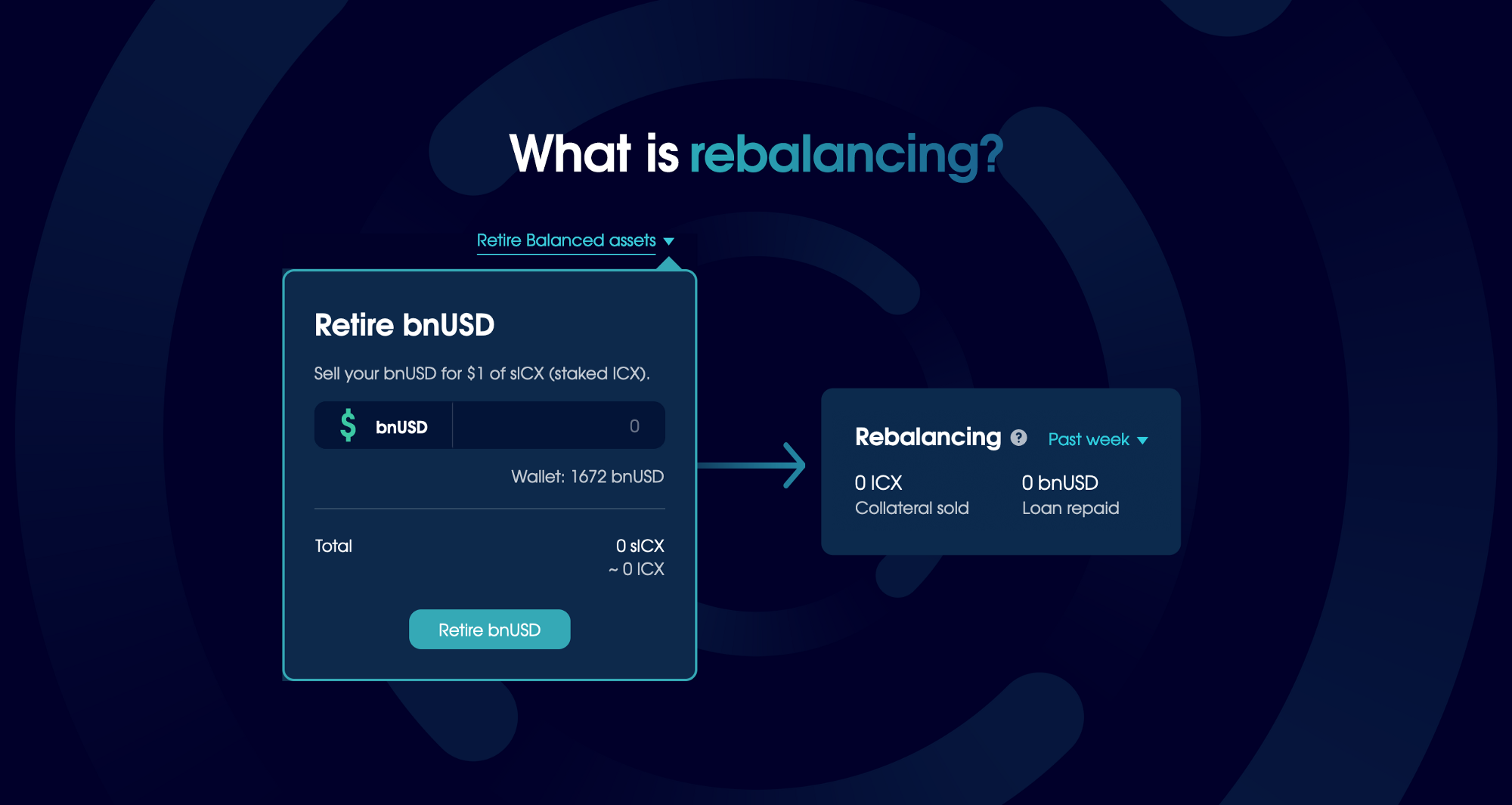About the rebalancing process
How Balanced guarantees the price of its assets.

How does Balanced guarantee the price of Balanced Dollars? If the price moves beyond a ‘rebalancing threshold’ (currently set to 5% above or below $1), it uses borrowers' positions to bring the price back to its peg. Let’s explore how this works.
If the sICX/bnUSD price is higher than the threshold, Balanced sells borrowers' sICX collateral at a high price, and uses the bnUSD proceeds to repay a larger amount of their debt.
If the sICX/bnUSD price is lower than the threshold, Balanced increases borrowers' debt (free of charge), then uses the bnUSD to buy sICX at a cheap rate and add it to the borrowers' collateral balance.
This 'rebalancing' happens to a group of 50 borrowers at a time. The amount of collateral sold/purchased will be 0.05% of the group’s debt, or enough to bring the price back to its peg – whichever is less. The impact is the same, percentage wise, for all borrowers.
For example:
The sICX/bnUSD price is 5% above true value.
The group of borrowers to be rebalanced have a combined debt of 1,000,000 bnUSD, which means a maximum of 500 bnUSD can be repaid.
Alice is one of the borrowers, with a loan of 10,000 bnUSD. When the rebalancing happens, Alice’s debt is reduced by 5 bnUSD, and $4.75 of her collateral is sold. The amount will be displayed to Alice in the position details section.
Rebalancing can only occur when the sICX/bnUSD price moves past the rebalancing threshold, which is currently set to 5%, but can be adjusted through governance. When this condition has been met, anyone can trigger a rebalancing from the smart contracts.
After you've been rebalanced, every other borrower will take a turn before it happens to you again.
Got questions about the rebalancing process? Chat with us on Discord.

